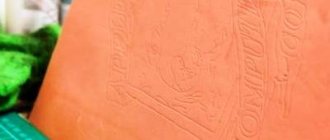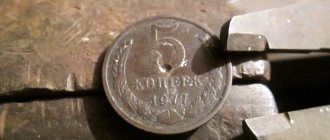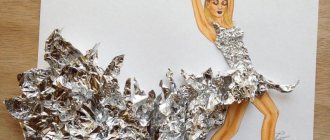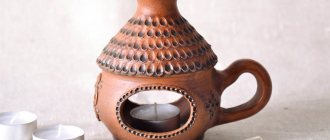Recently, clothing with various prints has become very popular. It perfectly reflects the character and personality of its owner. The most widespread application of designs on T-shirts, but it is not necessary to stop only at this part of the wardrobe.
You can decorate any textile product:
- hats;
- sweatshirts;
- raglans;
- bags;
- windbreakers, etc.
Such products will not only complement your favorite look, but will also become a creative gift.
Options for creating a drawing with your own hands
Today you can find many specialized companies and printing houses that are engaged in applying prints to various clothes. But it is much more pleasant, and even more profitable, to carry out this process yourself.
If you are seriously wondering how to make a print on fabric with your own hands, then we hasten to please you.
There are several proven methods for similar handmade:
- using a color printer;
- using acrylic paints;
- silkscreen printing.
Each type is quite simple and concise. You will need a minimum of effort to create your own design masterpiece.
Useful tips
Painting on T-shirts with acrylic paints allows you to express your creativity. In order to reveal them fully, it is necessary to take into account the advice of experienced masters and not repeat their mistakes. The following tips should be highlighted:
- Before starting work, be sure to wash and dry the item of clothing that you are going to paint. After this, it is ironed and stretched onto a batik frame.
- If you want to get a drawing without any clear outlines and with smooth color transitions, then you can use the free technique of applying the image. It consists of randomly applying several shades. After that, they are allowed to spread over the T-shirt.
- To obtain an image with clear shapes and boundaries, you should use the cold or hot batik technique. In the first case, the details of the drawing are outlined with a special compound that prevents the paint from spreading beyond the boundaries of the drawing. In the second case, the light parts of the image are impregnated with wax, which prevents them from coloring. The drawing is applied with strict adherence to the sketch, starting with light details and ending with dark ones.
- To give reality to the drawing, it is necessary to supplement it with a volumetric contour.
- You can use fabric markers to write pre-designed words.
- You can cut out an inscription template or symbol from thick paper and paint it with acrylic paint.
- You can decorate a T-shirt with various stamps, which can be any vegetables and fruits with a beautiful structure and shape. To do this, the fruit is cut into two parts, one of which is dipped in paint. The finished stamp is applied to the desired location on the T-shirt.
Drawing on fabric using a printer
Time passes and technologies change. Just a couple of decades ago, such handicraft was possible only with the help of Chinese stickers, which were not of high quality, quickly lost their original appearance, and were worn out. Today, a home printer, a textile product, thermal transfer paper and a household iron will help you solve the question of how to make a design on fabric with your own hands.
To get a high-quality pattern and not ruin your clothes, avoid synthetic models. The iron will simply melt the fabric under high temperature. Items that are at least 80% natural cotton are preferred.
The drawing process is quite simple:
- You need to find a suitable image layout or create it yourself in a graphics editor, but do not forget that there will be a mirror image.
- Transfer the design to a carefully smoothed item, placing a sheet of paper face down. To do this, you need to iron the sketch with a hot iron for 1–2 minutes.
- To avoid damaging the print, carefully remove the sheet of paper from the surface of the textile product.
In this simple way you will get a stylish update to your wardrobe. There is only one nuance to consider when choosing thermal transfer paper. It comes in several types depending on its purpose. There are products for light and dark fabrics, as well as for different printer models.
How to embroider on clothes with threads
- Select clothes
- Gather everything you need
- Determine the embroidery position
- Select a picture
- Think over the color scheme
- Prepare the fabric for embroidery
- Select embroidery threads
- Transfer the drawing
- Start embroidering
- Washing and caring for embroidered clothes
Below are all the details.
Acrylic wonders
How to make a print on a T-shirt yourself if you don’t have a printer to print the design? In this case, the second method of creating exclusive images on clothes is suitable. Artistic skills or a special stencil will help you. If you are not particularly skilled at drawing, it is unlikely that you will be able to create a complex sketch, but everyone can add a dose of creativity to their wardrobe.
Do-it-yourself fabric printing can only be done with special acrylic paints. Working with them is not entirely easy, since you need to maintain a certain speed and technology:
- the paint dries within 15 minutes, later it will be impossible to fix anything;
- You need to apply a thin layer, otherwise the design will not dry and may smear.
If you strictly follow the instructions, then there should be no difficulties in this process.
How to make a print:
- it is necessary to prepare a stencil with an image or text;
- carefully iron the T-shirt or other item you plan to decorate;
- lay a solid foundation;
- fill the stencil with acrylic paint using a sponge;
- if necessary, correct the drawing with a brush;
- After 24 hours, iron the item through a thin cloth.
If you have talent and are passionate about creativity, then you can make an original drawing using a regular painting brush.
How to embroider floss on clothes in the chosen color
You can take a drawing you already have and use colored pencils to colorize your drawing. This way we can see what our diagram will ultimately look like in color.
Silkscreen printing
This method is essentially similar to the previous one. Only a special photographic emulsion is used as a dye. The paint penetrates the fabric through a screen mesh, dries, and then is exposed to light. The next step in creating your personal masterpiece is to rinse the stencil with water. In this case, the unexposed areas of the grid are cleaned, which become the printing element.
The advantage of this method of image transfer is that there are no restrictions on working with materials. You can use it not only on clothes, but also on dishes or plastic products.
Printing a T-shirt with your own hands will help you create a unique image and stand out from others. This is a fashionable and stylish way to update a boring item. All you have to do is choose a convenient and affordable method of transferring the drawing to the desired surface.
Care after embroidery
Clothes with hand embroidery require proper care, otherwise things will quickly lose their appearance and become unsuitable for wearing.
You should wash clothes that have embroidery using any technique only by hand in cool water . The powder should be chosen only for delicate colored fabrics. If the embroidery is large, you should not wring out or twist the clothes - this will cause the pattern to deform.
If the item is washed for the first time after embroidery and there are traces of a water-soluble marker on it, it should be placed in a bowl of cold water without adding detergent. It should be left in this state until traces of ink completely disappear. Then the water is changed and washing powder is added.
If the pattern is small, you can dry embroidered clothes When doing voluminous embroidery, things are laid out on a flat surface so that the pattern does not become deformed. To remove excess water faster, you can roll up your clothes in a terry towel, but not too tightly.
Embroidered outfits should only be ironed from the inside out.
Making a stencil using the program
Many people use photography as a stencil. But you can’t do this by hand, and this is where computer programs come to the rescue. The most famous programs in which you can make a stencil are Photoshop and MS Word.
When working in Photoshop, you need to adjust the levels of the photo so that the main parts become dark. Next, apply the applique effect, remove adjacent pixels using the “Magic Wand” and delete the unnecessary layer.
Or you can open the desired picture, remove unnecessary details and background. Using the “Filter/Sketch/Postpaper” menu, create a ready-made template.
And in MS Word, everyone knows such a function as “Add Text”, where you can select different fonts and create text of different sizes.
Image transfer media
Almost any inkjet printer or MFP - both modern and long since discontinued - allows you to print images on special media for transferring to products made from cotton and mixed fabrics that can withstand prolonged heating. The structure of such media includes a dense paper base and a thin elastic layer that is attached to the fabric when heated - it is on its surface that ink is applied during the printing process.
Each of the world's leading inkjet printer manufacturers offers branded printing media for transferring images onto fabric. Thus, Canon’s product line includes TShirt Transfer media (TR301), Epson has IronOn Cool Peel Transfer Paper (C13S041154), and HP has IronOn TShirt Transfers (C6050A). Retail packages of the listed media (Fig. 1) contain ten sheets of A4 format.
Rice. 1. Packaging of Canon T-Shirt Transfer media (TR-301) for thermal transfer of images to fabric
Rice. 2. Packaging of Lomond Transfer Paper for Bright Cloth media for thermal transfer of images onto light cotton fabric
In addition, third-party manufacturers also produce media for transferring images onto fabric. For example, the well-known company Lomond in our country offers several options: Ink Jet Transfer Paper for Bright Cloth (for light fabrics), Ink Jet Transfer Paper for Dark Cloth (for dark fabrics) and Ink Jet Luminous Transfer Paper (suitable for dark and light fabrics, and thanks to fluorescent additives the image glows in the dark). The listed Lomond media (Fig. 2) are available in packs of 10 and 50 sheets in A4 and A3 formats.
Using various pictures in fabric painting
In craft stores you can buy a variety of pictures for use in various techniques. They can also be found on the Internet on sites with various lessons. They are reusable, although the final results will vary.
Birds near flowers
This is a fun activity that allows a person to occupy himself with art and perfectly calm his nerves. Painting on fabric with paints is a very interesting process where you want to quickly try out all the techniques.











